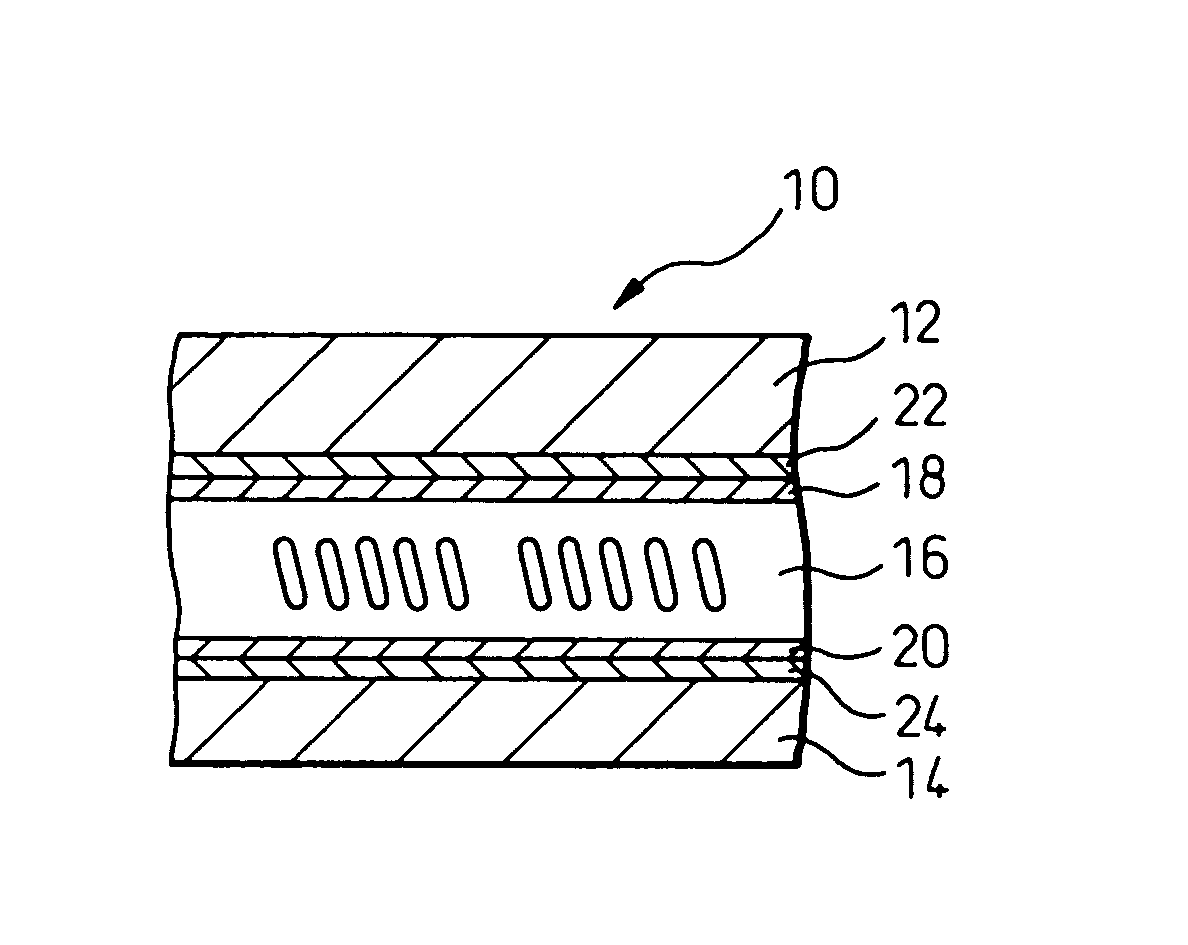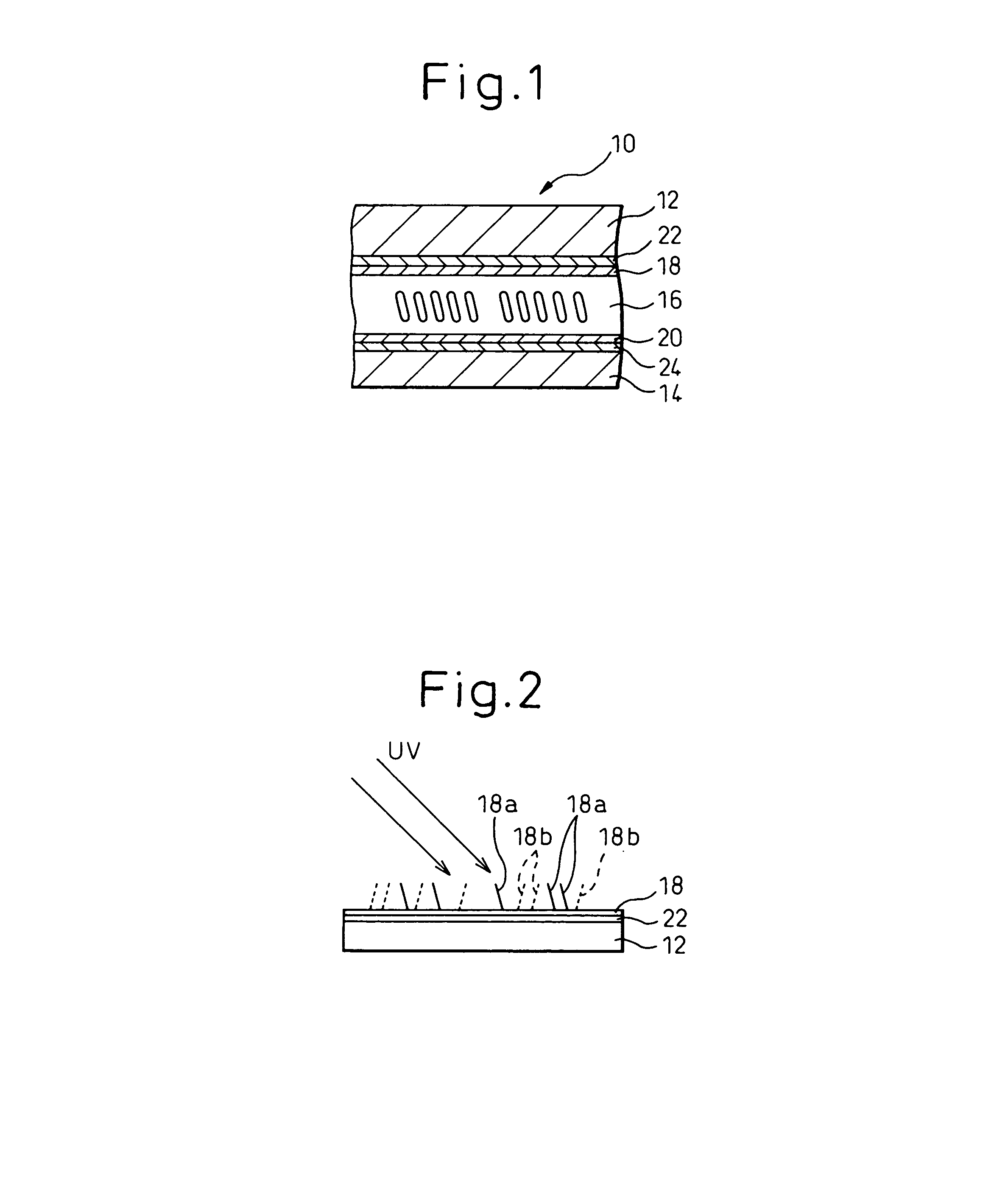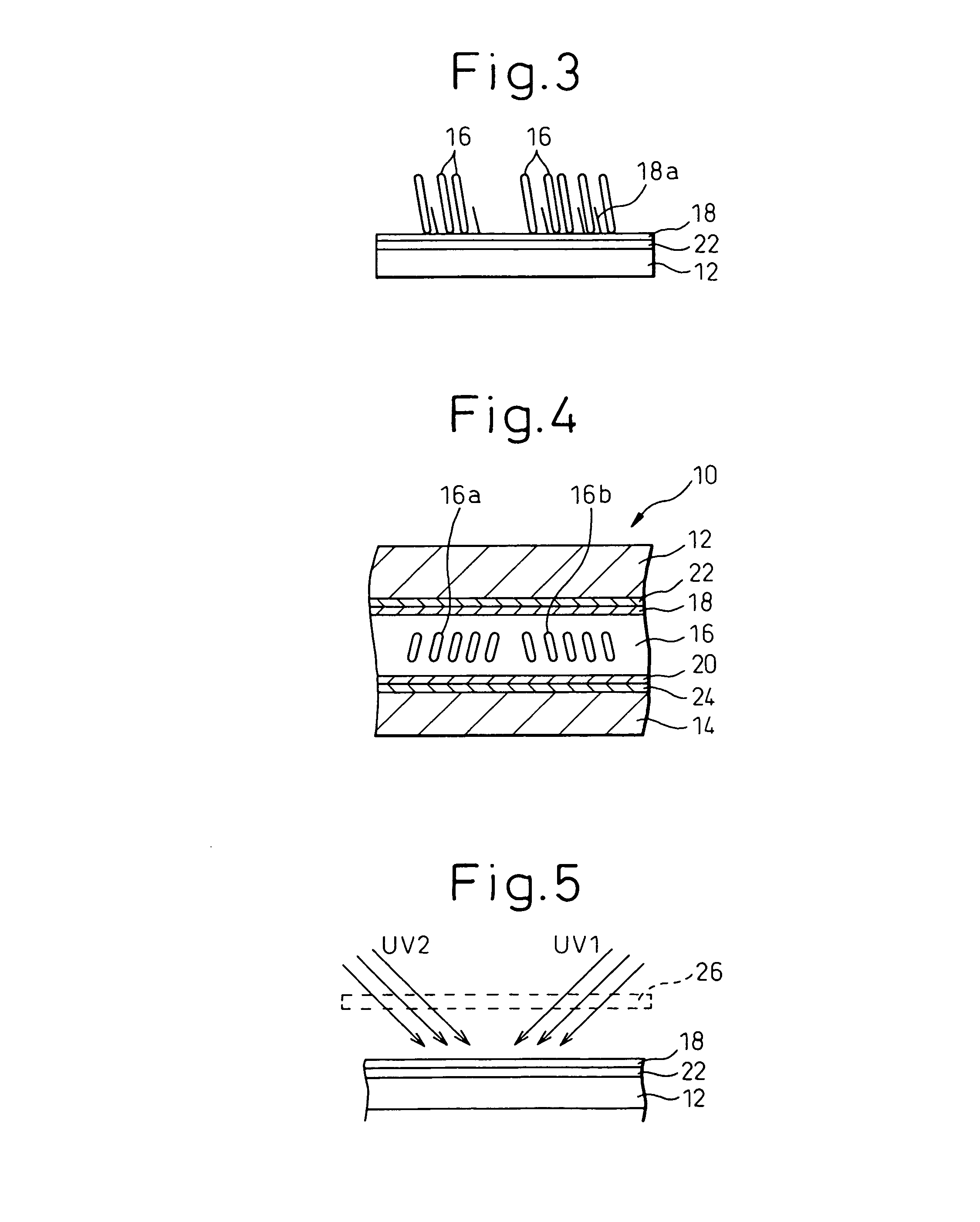Liquid crystal display device with alignment layer including a diamine component and treated by UV irradiation
- Summary
- Abstract
- Description
- Claims
- Application Information
AI Technical Summary
Benefits of technology
Problems solved by technology
Method used
Image
Examples
example 1
[0079]Alignment layers 18 and 20 are prepared from a mixture of polyamic acid A and polyimide H (having a 90% content of diamine component contributing to vertical alignment). The mixing ratio is polyamic acid A:polyimide H=49:1. The alignment layer material containing this mixture is applied by using a spinner and is baked to form the alignment layers 18 and 20 on the substrates 12 and 14. Ultraviolet light is irradiated onto the alignment layers 18 and 20 in the oblique direction. Incidentally, several samples are prepared by changing the irradiation quantity of the ultraviolet light. A thermosetting sealant is applied to one of the substrates and spacers of 4 μm are scattered on the other substrate, and both substrates are then joined. After vacuum packing, thermosetting is conducted to form an empty cell. A liquid crystal having negative dielectric anisotropy is charged into this empty cell in vacuum environment to form a liquid crystal display panel. A pretilt angle of the liqu...
example 2
[0080]The alignment layers 18 an 20 are prepared from a mixture of polyamic acid B having a surface energy change shown in FIG. 8 and polyimide G (having a 60% content of a diamine component contributing to vertical alignment). The mixing ratio is polyamic acid B:polyimide G=4:1. An alignment layer material containing this mixture is used to produce a liquid crystal display panel in the same way as in Example 1. A pretilt angle of the liquid crystal panel thus produced is measured. As represented by curve GB in FIG. 7, the pretilt angle attains minimum at an irradiation quantity 3J of the ultraviolet light, and the change of the pretilt angle is considerably small before and after this minimum value. In this way, a stable pretilt angle can be obtained. Surface energy hardly changes, either, as shown in FIG. 8.
example 3
[0081]Alignment layers 18 and 20 are prepared from a mixture of polyamic acid C having a surface energy change shown in FIG. 9 and polyimide F (having a 50% content of a diamine component contributing to vertical alignment). The mixing ratio is polyamic acid C:polyimide F=3:1. An alignment layer material containing this mixture is used to produce a liquid crystal display panel in the same way as in Example 1. A pretilt angle of the liquid crystal panel thus produced is measured. As represented by curve FC in FIG. 7, the pretilt angle attains about 88° at an irradiation quantity of 2J to 3J of the ultraviolet light, and the change of the pretilt angle hardly exists. In this way, a stable pretilt angle can be obtained. As shown in FIG. 8, the change of the voltage relative retention is small, and an excellent voltage relative retention can be acquired.
PUM
| Property | Measurement | Unit |
|---|---|---|
| Fraction | aaaaa | aaaaa |
| Length | aaaaa | aaaaa |
| Length | aaaaa | aaaaa |
Abstract
Description
Claims
Application Information
 Login to View More
Login to View More - R&D
- Intellectual Property
- Life Sciences
- Materials
- Tech Scout
- Unparalleled Data Quality
- Higher Quality Content
- 60% Fewer Hallucinations
Browse by: Latest US Patents, China's latest patents, Technical Efficacy Thesaurus, Application Domain, Technology Topic, Popular Technical Reports.
© 2025 PatSnap. All rights reserved.Legal|Privacy policy|Modern Slavery Act Transparency Statement|Sitemap|About US| Contact US: help@patsnap.com



